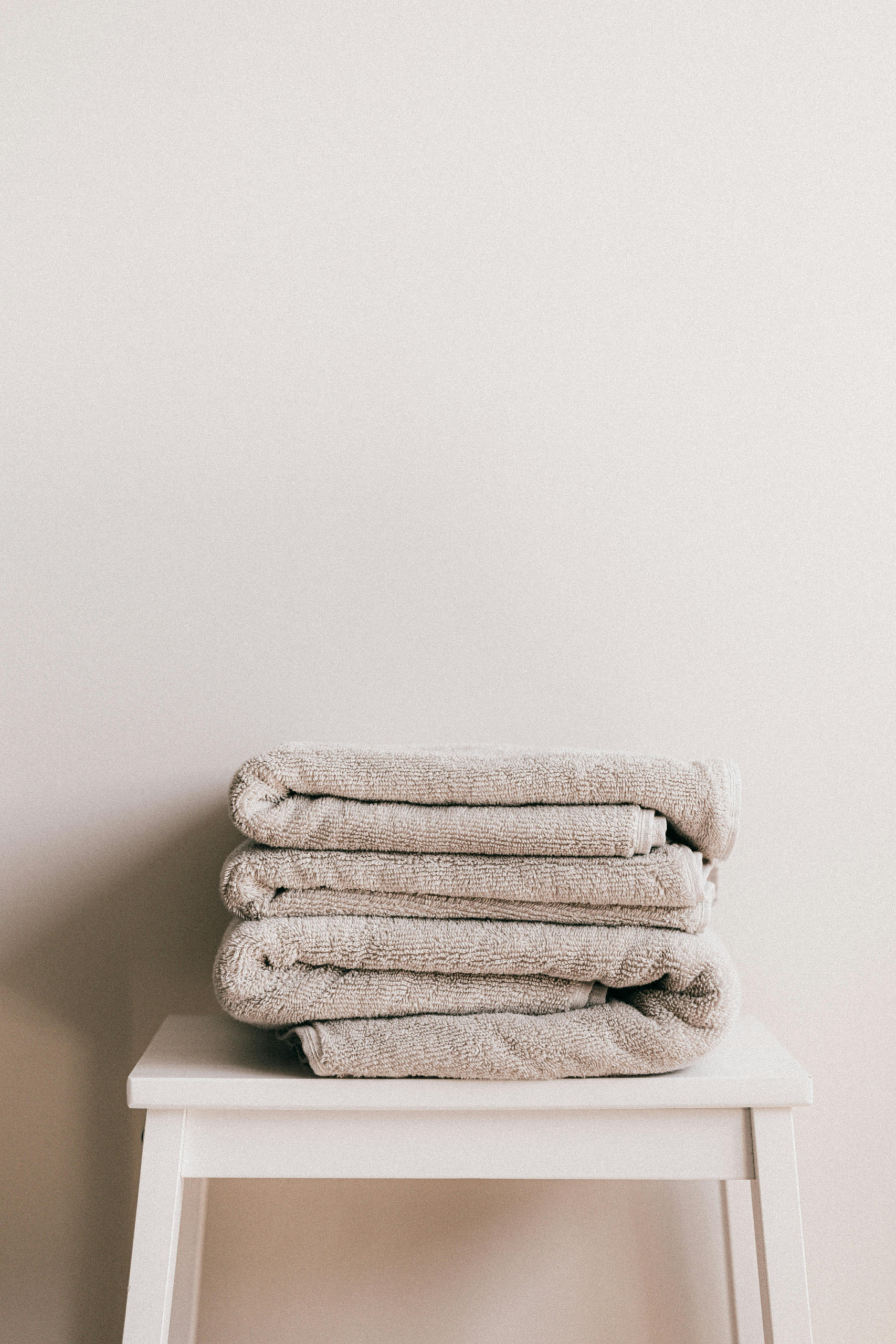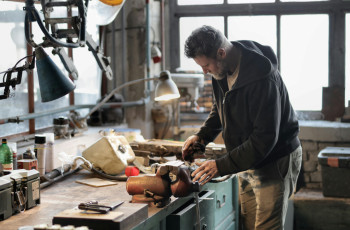When it comes to heavy-duty die grinding tasks, choosing the right abrasive materials is crucial for achieving optimal results. With a wide range of options available, finding the perfect match can seem overwhelming. However, understanding the characteristics and applications of different abrasive materials can simplify the decision-making process and ensure that you select the most suitable one for your needs. In this article, we will explore the various factors to consider when choosing abrasive materials for heavy-duty die grinding tasks, providing you with valuable insights and guidance to help you make an informed decision.
Factors to Consider
When it comes to selecting the right abrasive materials for heavy-duty die grinding tasks, there are several factors that you need to consider. Each factor plays a crucial role in determining the performance and efficiency of the grinding process. By understanding these factors, you can make an informed decision and ensure that you choose the right abrasive materials for your specific needs.
Type of Material Being Ground
The first factor to consider is the type of material that you will be grinding. Different abrasive materials are more effective for certain types of materials. For example, aluminum oxide is a common choice for grinding steel and other ferrous metals, while silicon carbide is better suited for grinding non-ferrous metals and stone. Ceramic and zirconia alumina are often used for grinding high-strength alloys and superalloys. By considering the material being ground, you can choose an abrasive material that will provide optimal results.
Grinding Speed
The grinding speed refers to the rotational speed of the grinding wheel. Different materials require different grinding speeds for optimal performance. For softer materials, a higher grinding speed may be necessary to achieve the desired surface finish. On the other hand, harder materials may require a lower grinding speed to prevent excessive heat buildup. It is important to consult the manufacturer’s recommendations and guidelines to determine the appropriate grinding speed for your specific application.
Required Surface Finish
Another important factor to consider is the required surface finish. Different abrasive materials have varying capabilities when it comes to achieving specific surface finishes. Some materials are better suited for coarse grinding, while others excel at producing fine finishes. It is crucial to determine the desired surface finish before selecting the abrasive material. This will help you choose a material that can meet your specific requirements in terms of smoothness, roughness, and precision.
Heat Sensitivity
Heat sensitivity of the material being ground is also a crucial factor to consider. Some materials are more sensitive to heat and can easily be damaged or distorted if excessive heat is generated during the grinding process. In such cases, it is important to choose an abrasive material that has good heat dissipation properties. Silicon carbide, for example, is known for its excellent heat resistance, making it suitable for grinding heat-sensitive materials. By considering the heat sensitivity of the material, you can prevent any potential damage and ensure a successful grinding process.
Types of Abrasive Materials
There are several different types of abrasive materials available, each with its own unique properties and advantages. Understanding the characteristics of each abrasive material can help you make an informed decision.
Aluminum Oxide
Aluminum oxide is one of the most commonly used abrasive materials. It is versatile and suitable for a wide range of grinding applications. Aluminum oxide is particularly effective when grinding steel and other ferrous metals. It is durable and has a high cut rate, making it ideal for heavy-duty grinding tasks.
Silicon Carbide
Silicon carbide is another popular choice for abrasive materials. It is known for its exceptional hardness and ability to withstand high temperatures. Silicon carbide is well-suited for grinding non-ferrous metals, stone, and ceramics. It is also commonly used for shaping and finishing wood and plastics.
Ceramic
Ceramic abrasive materials are engineered to provide superior performance and extended life. They are highly efficient in grinding high-strength alloys, stainless steel, and superalloys. Ceramic abrasives offer a consistent cutting action and are capable of maintaining their sharpness for a longer period of time compared to other materials.
Zirconia Alumina
Zirconia alumina is a tough and durable abrasive material that is suitable for heavy grinding and material removal. It is commonly used for grinding stainless steel, carbon steel, and other metals. Zirconia alumina abrasives are known for their aggressive cutting action and long life, making them ideal for demanding grinding tasks.

Abrasive Grain Size
The grain size of the abrasive material is an important consideration when selecting the right abrasive for heavy-duty die grinding tasks. The grain size refers to the size of the abrasive particles in the grinding wheel. Different grain sizes offer varying levels of aggressiveness and control.
Coarse Grits
Coarse grits have larger abrasive particles and are suitable for heavy material removal and shaping. They are ideal for rough grinding tasks where speed is important, but a smooth surface finish is not necessary. Coarse grits are commonly used for initial stock removal and deburring.
Medium Grits
Medium grits strike a balance between coarse and fine grits. They are versatile and can be used for a wide range of grinding applications. Medium grits are often chosen when a moderate amount of material needs to be removed, while still maintaining a relatively smooth surface finish.
Fine Grits
Fine grits have smaller abrasive particles and are ideal for achieving a smooth surface finish. They are commonly used for precision grinding and polishing applications. Fine grits produce finer scratches on the workpiece, resulting in a smoother and more refined surface.
Bonding Agents
The bonding agent or bond refers to the material that holds the abrasive grains together in the grinding wheel. The bond plays a crucial role in determining the strength, durability, and performance of the grinding wheel. There are several types of bonding agents commonly used in abrasive materials.
Vitrified Bond
Vitrified bonds are made from a mixture of clay, feldspar, and glass. They are known for their high strength and excellent cutting ability. Vitrified bonds are suitable for grinding applications that require high precision and tight tolerances. They are commonly used for grinding tools, high-speed steel, and hard alloys.
Resin Bond
Resin bonds are made from a mixture of resin and filler materials. They offer good elasticity and are more forgiving in terms of vibrations and shock resistance. Resin bonds are versatile and can be used for a wide range of grinding applications. They are commonly used for grinding stainless steel, cast iron, and non-ferrous metals.
Metal Bond
Metal bonds are made from a mixture of metal powders, such as bronze, cobalt, or nickel. They are extremely durable and are suitable for grinding applications that require high material removal rates. Metal bonds are commonly used for grinding ceramics, glass, and other hard and brittle materials.

Grinding Wheel Shapes
The shape of the grinding wheel is another important consideration when selecting abrasive materials for heavy-duty die grinding tasks. Different wheel shapes offer varying levels of accessibility and control.
Straight Wheels
Straight wheels are the most common and versatile wheel shape. They have a flat edge and a cylindrical shape, making them suitable for a wide range of grinding applications. Straight wheels are commonly used for surface grinding, cylindrical grinding, and tool sharpening.
Cylinder Wheels
Cylinder wheels have a slightly curved edge and a cylindrical shape. They are ideal for grinding curved surfaces or contours. Cylinder wheels are commonly used for grinding molds, dies, and other complex shapes.
Tapered Wheels
Tapered wheels have a tapered edge and are designed to grind at an angle. They are commonly used for grinding threads, gears, and other intricate shapes. Tapered wheels provide better access and control in tight spaces.
Wheel Structure and Density
The structure and density of the grinding wheel also play a significant role in determining its performance and efficiency. Different structures and densities offer varying levels of porosity, strength, and self-sharpening.
Open Structure
Open structure grinding wheels have larger gaps between the abrasive grains. They allow for better coolant flow and heat dissipation, making them suitable for heat-sensitive materials. Open structure wheels are commonly used for light material removal and finishing applications.
Closed Structure
Closed structure grinding wheels have smaller gaps between the abrasive grains. They provide better support and control during the grinding process, making them suitable for heavy material removal and rough grinding tasks. Closed structure wheels are commonly used for grinding hardened steel and other tough materials.
Medium Density
Medium density grinding wheels strike a balance between open and closed structures. They offer good versatility and can be used for a wide range of grinding applications. Medium density wheels are commonly used for general purpose grinding, including both light and heavy material removal.
High Density
High density grinding wheels have a higher concentration of abrasive grains. They offer exceptional cutting ability and are suitable for heavy-duty grinding tasks. High density wheels are commonly used for grinding hard metals, stainless steel, and other demanding applications.

Safety Considerations
When working with abrasive materials and grinding wheels, safety should always be a top priority. There are several safety considerations to keep in mind to ensure a safe and successful grinding process.
Choosing the Right Wheel Size
It is important to choose the right wheel size for your specific grinding application. Using a wheel that is too small or too large can increase the risk of accidents and injuries. Consult the manufacturer’s guidelines and recommendations to determine the appropriate wheel size for your machine and the intended grinding task.
Checking Maximum Operating Speed
Each grinding wheel has a maximum operating speed that should not be exceeded. Operating the wheel at a speed higher than the recommended limit can lead to wheel breakage and potential injury. Always check the maximum operating speed of the grinding wheel and ensure that your machine is capable of operating within that range.
Proper Use of Personal Protective Equipment (PPE)
When using abrasive materials and grinding wheels, it is essential to wear the appropriate personal protective equipment (PPE). This includes safety glasses or goggles to protect your eyes from flying debris, a face shield to protect your face and neck, gloves to protect your hands, and ear protection if necessary. Make sure to follow all safety protocols and guidelines to prevent any accidents or injuries.
Cost Considerations
Cost is an important factor to consider when selecting abrasive materials for heavy-duty die grinding tasks. While it may be tempting to choose the cheapest option, it is important to consider the overall cost-effectiveness and long-term performance.
Initial Cost
The initial cost of the abrasive material and grinding wheel should be considered. However, it is crucial to also evaluate the overall performance and longevity of the material. Choosing a higher-quality abrasive material and wheel may have a higher initial cost but can provide better performance and durability, ultimately resulting in cost savings in the long run.
Longevity
The longevity of the abrasive material and grinding wheel is another important cost consideration. High-quality materials may last longer and require fewer replacements, reducing maintenance and replacement costs. It is important to evaluate the expected lifespan of the abrasive material and wheel when considering their cost-effectiveness.
Performance
The performance of the abrasive material and grinding wheel is a key factor in achieving efficient and accurate grinding results. Higher-quality materials may offer better cutting ability, faster material removal rates, and superior surface finish. By considering the performance of the abrasive material, you can ensure that you achieve the desired results in a timely manner.
Environmental Impact
In today’s environmentally conscious world, it is important to consider the environmental impact of the abrasive materials and grinding wheels you choose for heavy-duty die grinding tasks. Several factors can affect the environmental impact.
Disposable vs. Reusable Wheels
Disposable wheels are typically made of low-cost materials and are designed to be discarded after use. While they may initially offer a lower cost, they contribute to waste and environmental pollution. Reusable wheels, on the other hand, are designed to be used multiple times, reducing waste and minimizing the environmental impact. Choosing reusable wheels can be a more sustainable option.
Recyclability
The recyclability of the abrasive materials and grinding wheels should also be considered. Some materials can be recycled and reused, reducing the demand for new raw materials and minimizing waste. Investigate whether the abrasive materials and wheels you are considering are recyclable and choose materials that can be recycled whenever possible.
Selecting the Right Wheel for the Job
To select the right wheel for heavy-duty die grinding tasks, it is important to assess your specific grinding requirements and match them with the appropriate wheel specifications.
Assessing Grinding Requirements
Start by assessing the specific requirements of your grinding task. Consider factors such as the material being ground, the desired surface finish, and the level of material removal required. By understanding your grinding requirements, you can narrow down the choices and select the most suitable abrasive material and wheel.
Matching Wheel Specifications
Once you have assessed your grinding requirements, it is time to match them with the appropriate wheel specifications. Consider factors such as the type of abrasive material, grain size, bonding agent, wheel shape, and structure. Ensure that the wheel specifications align with your specific grinding needs and will provide the desired results.
By carefully considering these factors and matching them with the appropriate abrasive materials and grinding wheels, you can ensure that you select the right tools for your heavy-duty die grinding tasks. This will help you achieve efficient, precise, and safe grinding results, enhancing your overall productivity and success. Remember to prioritize safety, consider the environmental impact, and evaluate the cost-effectiveness of your choices. With the right abrasive materials and grinding wheels, you can tackle even the most challenging grinding tasks with confidence.



